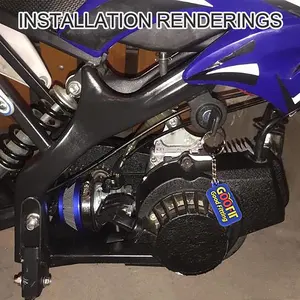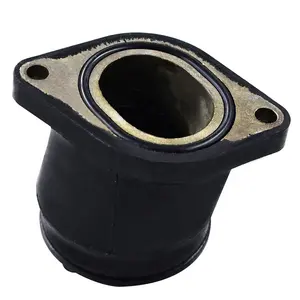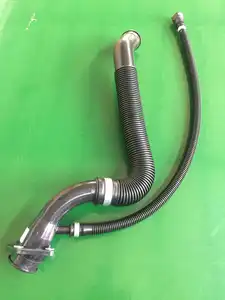Understanding Carburetor Rubber Intake Manifolds
The carburetor rubber intake manifold is a crucial component in the realm of internal combustion engines, serving as a conduit between the carburetor and the engine. This part ensures a smooth flow of the air-fuel mixture, contributing to the engine's efficiency and performance. The manifold must withstand various temperatures and chemical exposures, making the choice of material and design pivotal.
Types and Applications
There are several types of motorcycle intake manifolds tailored to different engine configurations and performance requirements. From single-cylinder engines to complex multi-cylinder setups, the manifold design varies to optimize the air-fuel mixture's path. Applications range from standard motorcycles to high-performance bikes, each demanding specific manifold characteristics to suit their operational needs.
Features and Materials
The rubber intake manifold is known for its flexibility and resistance to vibration, which helps in reducing the risk of cracks and leaks. The materials used are typically high-grade rubbers or synthetic compounds that offer durability and heat resistance. These materials are essential in maintaining the integrity of the seal and the overall performance of the fuel delivery system.
Advantages of Quality Manifolds
A well-designed carburetor intake manifold can significantly influence the efficiency of fuel delivery. The right manifold ensures optimal air-fuel mixing, which is critical for the engine's power output and fuel economy. Moreover, the durability of rubber manifolds reduces the need for frequent replacements, providing a balance between performance and maintenance.
Selection Considerations
When selecting a universal motorcycle intake manifold, it is important to consider the engine's specifications and the desired performance outcomes. Factors such as the manifold's volume, shape, and the material's compatibility with the fuel type are critical. It is also essential to understand the difference between standard fuel pumps and injection fuel pumps to ensure the manifold's compatibility with the existing fuel delivery system.
Integration with Fuel Systems
Integrating a rubber manifold with the motorcycle's fuel system requires a precise match to the carburetor and engine ports. This ensures a seamless flow and pressure consistency, which is vital for the sequential delivery of fuel in advanced injection systems. The manifold acts as a bridge in this process, highlighting its importance in the overall functionality of the motorcycle's engine.



































 浙公网安备 33010002000092号
浙公网安备 33010002000092号 浙B2-20120091-4
浙B2-20120091-4